The history of Santa Brígida can still be seen in the natural environment, which is an attractive excursion for anyone visiting the municipality. One place that clearly reveals the aboriginal past is Cueva de Los Frailes, situated next to the La Calzada bridge, dug into the La Caldereta volcano. This is a site made up of 37 natural caves that was discovered in 1933.
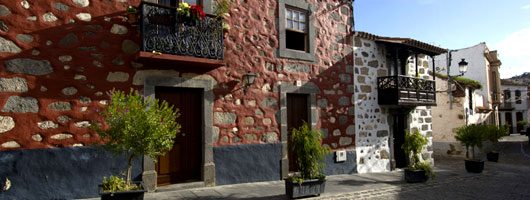
La Cueva de los Canarios is situated in the northern wall of the Caldera de Bandama. It was used by the original Canary Islanders as a grain store. It contains important Lybic-Berber inscriptions, discovered in the 19th century. Some of the pots that make up the Canary Island Museum collection come from this site. La Angostura Valley and Las Meleguinas also offer a wealth of interesting aboriginal remains. These are groups of caves dug into rocks, cliffs and crags. There importance has led to the district being declared a Cultural Heritage Site. The archaeological complex of El Tejar is close by. It gets its name from an old pantile kiln dating back to the 16th century. Here, you can see the remains of a dry stone wall that points to the existence of an aboriginal house or the formation of a burial mound. Pieces of pottery, pots, carvings and curious painted signs have also been found.
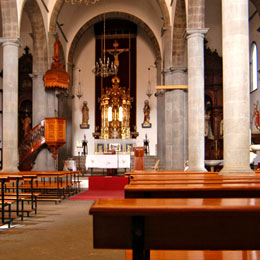
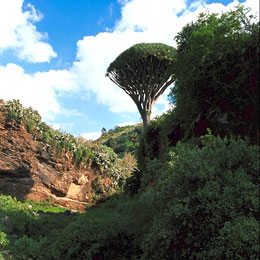
If you walk around the town, you will easily see the Santa Brígida Parish Church. The first chapel was founded in 1525, on the site of the present church. After a fire, the church was repaired and now has an exterior with Neo-Gothic features and an interior that is typical of many of the island churches: a three nave lay-out, all of which are the same height, barrel vault ceilings with severe features from the original structure. We can also visit the Guiniguada Agricultural Park, next to the Satautejo Palm Grove.
The country side around Santa Brígida is extraordinarily beautiful, including the Dragon Tree of Barranco Alonso, situated in the area of the same name. This tree is estimated to be 500 years old. It is not only striking for its beauty and majestic appearance, but also for its location, as it clings desperately to the edge of a crag.

The area of Monte Lentiscal is characterised by the abundance and variety of tree species: mastic trees, mocan trees, Canary Island strawberry trees, dragon trees, wild olive, junipers, etc., which have given rise to several place names in the area. This forest is now considerably smaller because it has been felled for building and for clearing land, especially for planting grape vines.
The Bandama Natural Monument, is set at a height of 574 m., covering an area of 325 hectares, and an approximate diameter of 1 km. it is the largest of the recently active volcanoes on Gran Canaria. It a relatively symmetrical cinder cone, horse-shoe shaped, open to the north-west, arising between the ravines of Las Goteras and Los Hoyos. The volcano covered a large area with lapili to an average depth of four metres, creating the largest field of pyroclasts on the Island.
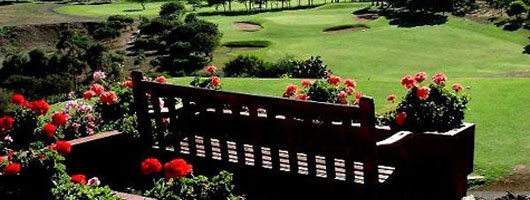
From the summit, you can see most of the island of Gran Canaria. The Bandama Golf Club and the Bandama Riding Club are next to the caldera.
Santa Brígida has another major attraction for visitors: the Wine Route. The Wine Presses are the first stop on this wine route, set in areas close to the volcanic soils of Bandama. There are a total of seven wine presses. In this same area, you can also find a typical Canary Island country house and, close by, La Cruz del Inglés – or Englishman’s Cross, on the border between the municipalities of Santa Brígida and Las Palmas de Gran Canaria. The route continues through the Caldera of Bandama, which was named after Daniel Van Dame, a 17th century Flemish merchant, and if you take the main road, you will come to Monte Lentiscal, where you will find the monument to the wine-growing district and you will have the chance to taste the famous local wines in one of the vineyards of the area. Some of these wines have their own denomination of origin label. The climb up to the Caldera gives us a view of the vineyards, sited on volcanic soil, or cinder.
Santa Brigida opens the doors of its farmer’s and handicraft market every Saturday and Sunday morning. Here, locals and visitors can buy local produce, including a wide variety of cheeses, farmhouse bread, hand made jams and honeys and a variety of pastries.
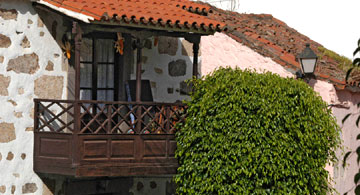
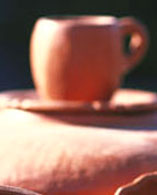
But this municipality is also known for its craft made clay pots and other bowls, etc. In the La Atalaya area, you will find many signs of the survival of this activity. La Villa de Santa Brígida, is known for its pottery work. In the area of La Atalaya, you will find most of the pottery of the municipality. In the centre of La Atalaya, you can visit the Casa Alfar de Panchito (Panchito’s Pottery House) and the Centro Locero de La Atalaya (La Atalaya Pottery Centre), which promote the tradition, offering visitors an attractive cultural visit.
The municipality of Villa de Santa Brígida was famous for years for its stringed instrument industry: timples, guitars, lutes, etc.... made from a selection of woods like walnut, orange wood, lignum vitae. Canary Island lace work and embroidery have also formed part of the local crafts, along with the manufacture of brooms from palm leaves.
In Santa Brígida, as in many other inland municipalities of the island, you will be able to find excellent typical Canary Island food. The farming and grazing activity in the Villa de Santa Brígida makes it possible to offer visitors delicious dishes like grilled meat, vegetable stews and wonderful broths.
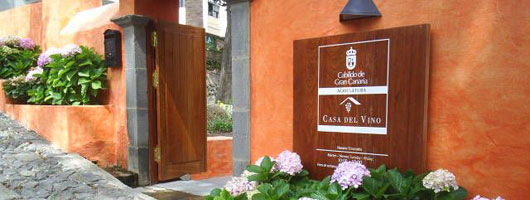
But the most typical of the produce of Santa Brígida include honey, jams made from local fruit and pastries, mainly made with honey and almonds.
And to wash down these delicious dishes, Santa Brígida offers some of the best wines of the district and, indeed of the island: the wines of El Monte, several of which have their own denomination of origin label.
And for dessert, the famous sponge cakes and marzipan.
Santa Brígida: Download Tourist Brochure | Map | Podcast
Accommodation: Santa Brígida